In today’s digital world, video content is more than just entertainment. It is a powerful way for businesses, creators, and influencers to connect with their audience and earn money.
“The global online video market is projected to reach $416.84 billion by 2030, with short-form videos alone expected to account for 90% of internet traffic by 2025 (Source: Vidico)”.
With millions of hours of watching videos the demand for video monetization platforms is rising.
Choosing the best among the various video monetization platforms is important. There are different models to consider, such as subscription, advertisement, and pay-per-view. Each model has its own benefits.
As we are in 2025, video monetization is continuing to grow with new technologies and hybrid models. This guide will take you through the best video monetization platforms, explain the different ways to make money from videos, and offer tips on choosing the right platform to maximize your earnings. Let’s get started!
Key Takeaways on Video Monetization Platforms
- Video monetization is growing, and there are several ways to make money from your videos, depending on your content and audience.
- Video monetization platforms that smoothly integrate ads and content types are essential for making the most money.
- Protecting your content is important, so video monetization platforms should have features like DRM and encryption to prevent piracy.
- Great, engaging content is key to keeping viewers and earning more money, no matter which monetization model you choose.
- Understanding your audience and choosing the right video monetization strategy is key to building a successful and lasting income.
What is video monetization?
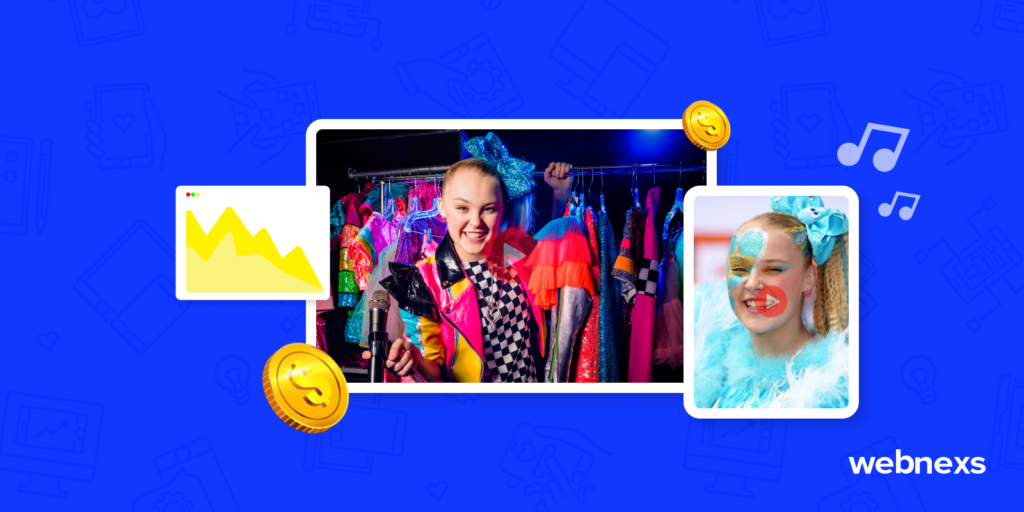
Video monetization is the process of generating revenue through streaming the videos online, based on how viewers watch and interact with them. You can earn revenue through including advertisements, collaborating with the sponsors, offering subscriptions or charging the viewers to watch the specific content.
Some popular ways to make money from videos include offering exclusive content, displaying ads or sponsored messages that appeal to your audience, and providing paid subscriptions for premium content. Many creators and businesses rely on video monetization platforms to manage and optimize these strategies.
The key to successful video monetization is providing great content that your audience enjoys and finds useful.
Types of Video Monetization Models
If you want to generate money through videos, there are different types of models to earn.
The three main models are AVOD, SVOD, TVOD. Each of these models works differently and offers benefits as well as challenges.
Advertising-Based Video on Demand (AVOD)
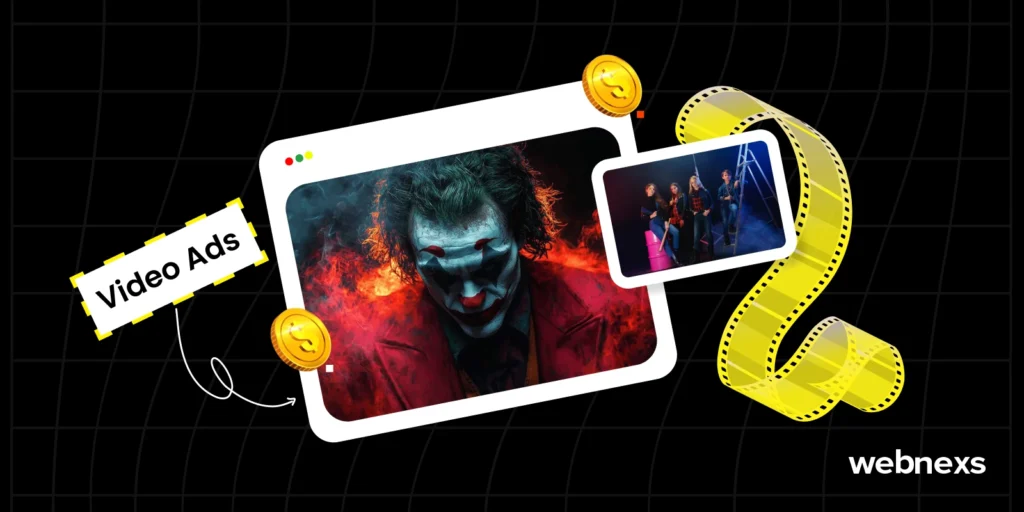
Advertisement video on demand(AVOD) means the advertisement will be shown at the beginning, in the middle, or at the end of the video. The platform or the content creators earn money through the advertisements and not from the viewers.
This is the most popular model since the users have free access to the video content, while the creators earn money through the advertisements.
The more views the videos get, the more money they will get from advertisers.
A major improvement in AVOD is Server-Side Ad Insertion (SSAI), also called dynamic ad insertion. Instead of loading ads separately like traditional methods, SSAI smoothly blends ads into the video stream. This makes it harder for ad blockers to skip them and ensures:
- A better viewing experience without interruptions.
- More viewers watching the full ads, leading to higher earnings.
- Smarter ad placements based on user preferences.
For example, YouTube uses this model as viewers watch videos for free, but ads are displayed, and content creators earn money from these ads.
Advantages:
- Free Access for Viewers
- Larger Audience Reach
- Flexible for Creators
- No Subscription Barriers
- Multiple Revenue Streams
Disadvantages:
- Dependence on Ad Revenue
- Limited Control Over Ad Placement
- Lower Earnings per View
- Ad Blockers Impact Revenue
Subscription-Based Video on Demand (SVOD)

Subscription Based Video on Demand(SVOD), is the model where the users pay a regular fee on a monthly or a yearly basis to access all the available content on the platform with no advertisements.
This is the most popular model used by streaming services lately. Subscribers enjoy unlimited access to a variety of content, and the platform generates stable revenue from those who subscribed.
For example, Subscribers pay a monthly fee on Netflix to access the library of content like TV shows, movies, documentaries etc.
Advantages:
- Consistent and reliable earnings
- Better user experience
- Exclusive content
Disadvantages:
- High costs for creating content
- Limited access in some regions
- Intense competition from other services
- Risk of subscribers canceling
Transactional-Based Video on Demand (TVOD)
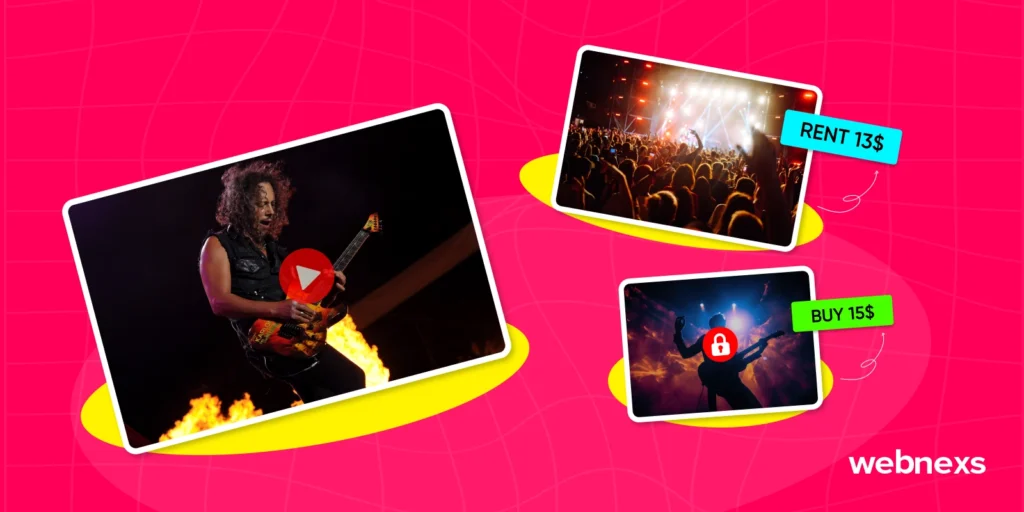
Transactional Video on Demand(TVOD), is the model which works on “pay-per-view” basis. Viewers will pay for each piece of content they watch like renting a movie or purchasing a video.
There are two types of payment such as rental and purchase. In rental, users can watch the content for a limited period, and in purchase, the users can own it and watch it at any time. This model allows users to pay for what they want to watch instead of a regular subscription fee.
For example, Apple TV follows the TVOD model, where users pay a one-time fee to rent or buy movies and TV shows.
Advantages:
- Pay only for what you watch
- Great for occasional viewers
- No long-term commitment
- Flexibility
Disadvantages:
- Revenue can be inconsistent
- Difficult to retain viewers
- Limited content compared to subscriptions
Key Features to Look for in a Video Monetization Platforms
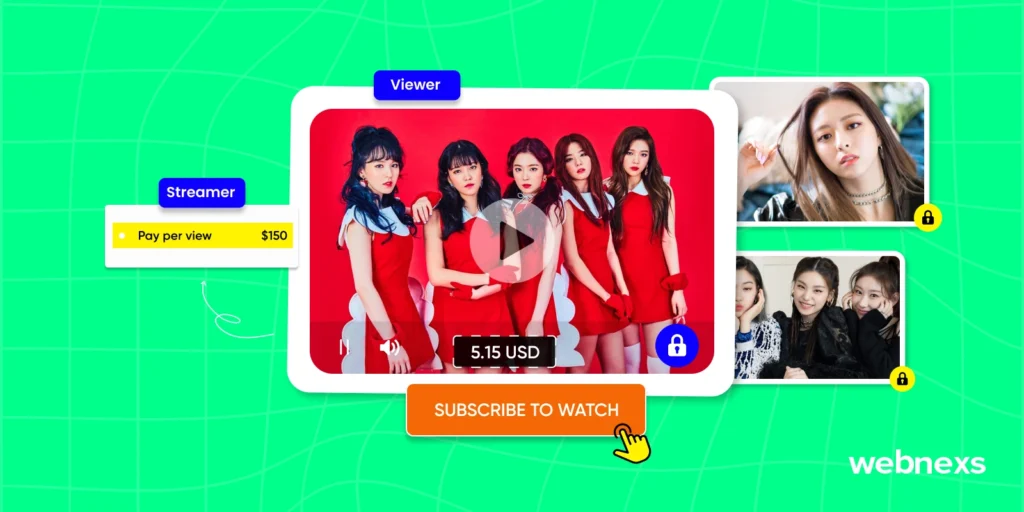
Supports Different Video Types
64% of online video consumption is driven by video on demand (VOD), including both live and recorded content. (Source: Statista)
A reliable video monetization platforms should support a variety of video formats so as to meet the needs of the content creators. If you are streaming live events, offering video on demand or pay-per-view content, the platform must seamlessly support all these different video types.
This flexibility lets you reach different types of audiences and give them the best viewing experience, no matter what kind of content you are offering.
Ad Integration
80% of viewers will engage more with video ads that are shown in the context of content they already enjoy. (Source: Google)
To maximize revenue, video monetization platforms help to integrate advertisements into your videos. This includes display ads, sponsored ads, or even video ads.
It is important to integrate the ads strategically without interrupting the user experience which allows you to monetize your content effectively and also keeps your viewer engaged.
Easy Payments
30% of consumers prefer using digital wallets (like PayPal, Apple Pay) for payments, highlighting the need for flexible payment systems. (Source: Statista)
Payment should be easy and safe for both creators and viewers. A good video monetization platform offers different payment options, making it simple for viewers to pay for rentals, purchases, or subscriptions.
The platform should ensure smooth payments and reliable payouts for creators, whether through credit cards, digital wallets, or other methods. This way, you can focus on creating content while the platform handles the things related to payments.
Strong Security
The global market for digital rights management (DRM) solutions is expected to grow by 17.2% annually, highlighting the increasing demand for video content protection.
(Source: Market Research Future)
Security is important when dealing with video content, especially for creators looking to protect their intellectual property. A trusted platform should provide strong security features like digital rights management (DRM), encryption, and secure payment processing.
This ensures that your content is protected from unauthorized access or piracy, while also safeguarding user data. Strong security builds trust with both creators and viewers, making them feel safe when interacting with your platform.
Content Management & Analytics
69% of content marketers consider analytics a key part of their strategy for improving video engagement. (Source: Wistia)
A good video monetization platform needs easy-to-use tools for managing your videos and tracking how they perform. You should be able to upload, organize, and manage your content easily. The platform should also give you detailed data on how viewers are engaging with your videos, how much money you’re making, and other important stats. These tools help you improve your content and better connect with your audience to grow your business.
Top 10 Video Monetization Platforms: A Quick Overview
| Platform | Monetization Models | Best For |
| Webnexs | Subscription, Pay-Per-View, Ads | Businesses looking for custom OTT and streaming solutions |
| Flicknexs | Subscription, Pay-Per-View, Ads, Freemium | Small to medium businesses focused on video streaming |
| Kaltura | Subscription, Ads, Pay-Per-View, Licensing | Enterprises needing customizable video solutions |
| Muvi | Subscription, Pay-Per-View, Ads, Freemium | Content creators and businesses launching OTT platforms |
| Vimeo | Subscription, Ads, Pay-Per-View | Independent creators, filmmakers, and businesses |
| Dacast | Subscription, Pay-Per-View, Ads | Live streaming, educational platforms, and events |
| Brightcove | Subscription, Ads, Pay-Per-View | Large enterprises and media companies |
| Panopto | Subscription, Licensing | Educational institutions and businesses for training |
| JW Player | Subscription, Ads, Pay-Per-View | Media companies and content producers |
| Wistia | Subscription, Freemium, Ads | Small businesses and marketers for video marketing |
10 Top Video Monetization Platforms of 2025
Webnexs
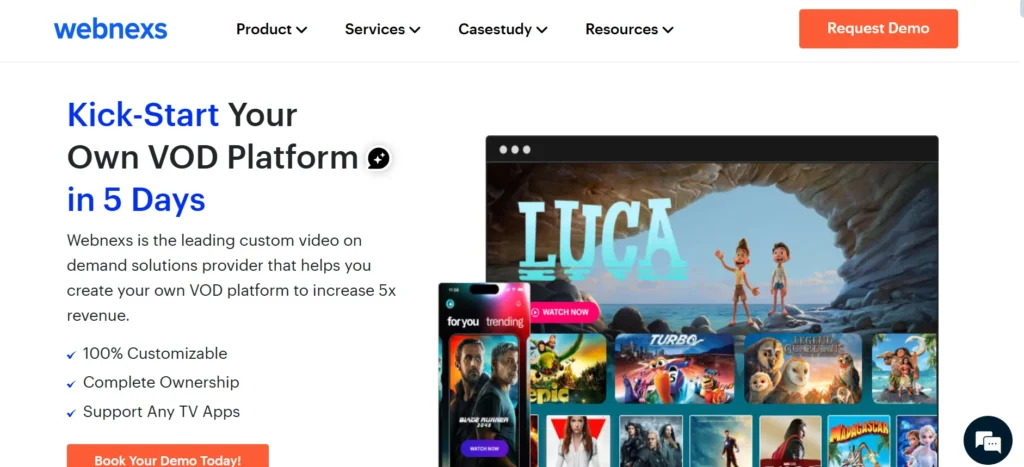
Webnexs is the all-in-one platform that helps businesses to create their own video streaming services. With the help of a user-friendly interface and advanced features, webnexs allows users to manage and monetize the content smoothly. Can be customized to suit any range of features customers expect.
It offers different ways to generate revenue, like subscription-based, advertisement and pay-per-view models. Webnexs is ideal for businesses that need a flexible and secure service to stream videos while keeping control over how their content is shared.
Webnexs offers personalized pricing based on what your business needs. The cost depends on the features you choose, the size of your business, and how many users you have.
Pros
- Can be customized to fit different business needs.
- Works well for large-scale video streaming services.
- Supports both live streaming and on-demand videos.
- Provides strong security and tools to manage users.
Cons
- The price may be too high for small businesses.
- You may need technical knowledge to set up and make the most of the features.
Flicknexs
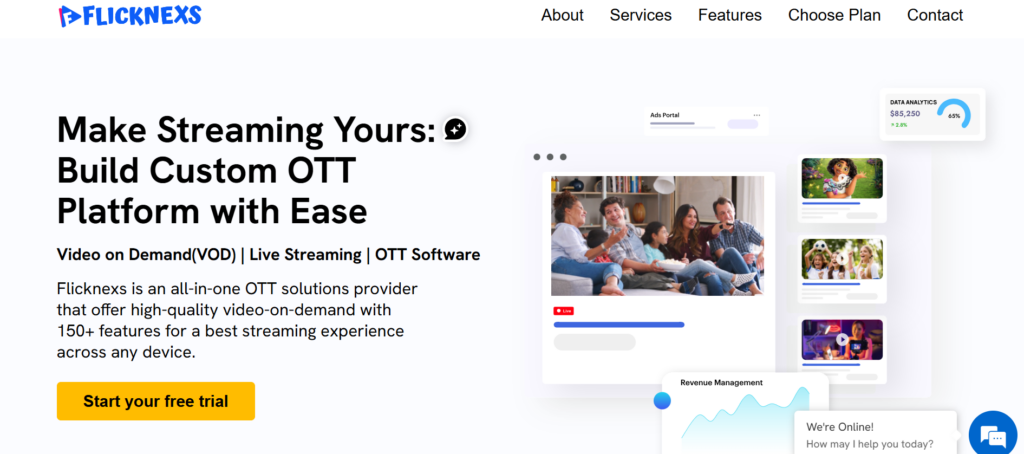
Flicknexs is an all-in-one Video Monetization platforms that focuses on live streaming, video hosting, and on-demand content management. It helps businesses easily organize their video libraries and offers monetization options such as subscriptions, pay-per-view, and ads.
Flicknexs integrates smoothly with platforms like WordPress and Shopify, making it a great choice for businesses that want to add video content to their existing websites.
Pros
- User-friendly platform suitable for small to medium-sized businesses.
- Multiple monetization options available.
- Good support for video hosting and streaming.
- Free trial for testing
Cons
- Limited features in the Basic Plan.
- The higher-tier plans may be expensive for smaller businesses.
Kaltura
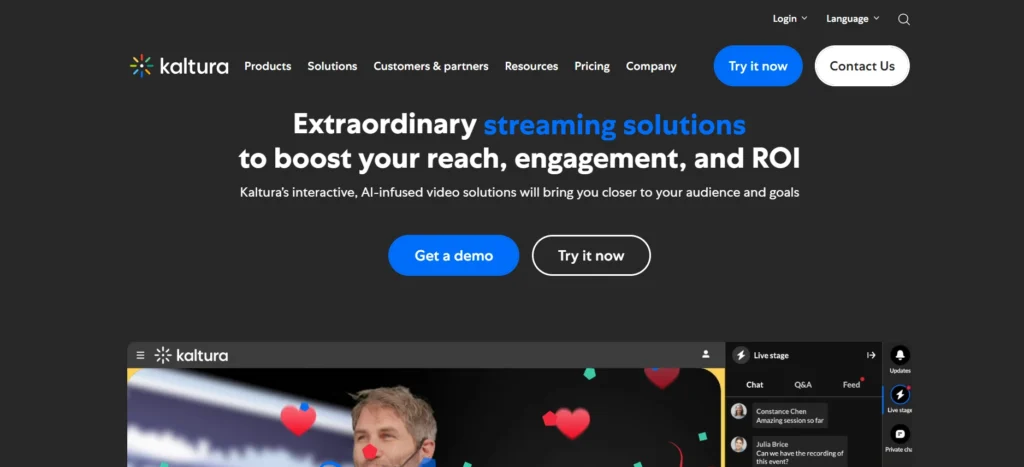
Kaltura is a powerful video platform designed for businesses, schools, and media companies.
It offers customizable solutions that can grow with your needs, supporting monetization options like subscriptions, pay-per-view, and ads. It’s perfect for larger organizations that need a full video management system.
Kaltura offers personalized pricing based on the size of your business and the features you need. Pricing is determined individually, depending on the scale and number of users.
Pros
- Highly customizable to fit different needs.
- Works well for large businesses or organizations.
- Provides strong security and management tools for videos.
- Great analytics and reporting features.
Cons
- Can be expensive for small businesses or individual creators.
- It requires technical knowledge to set it up and use it effectively.
Muvi
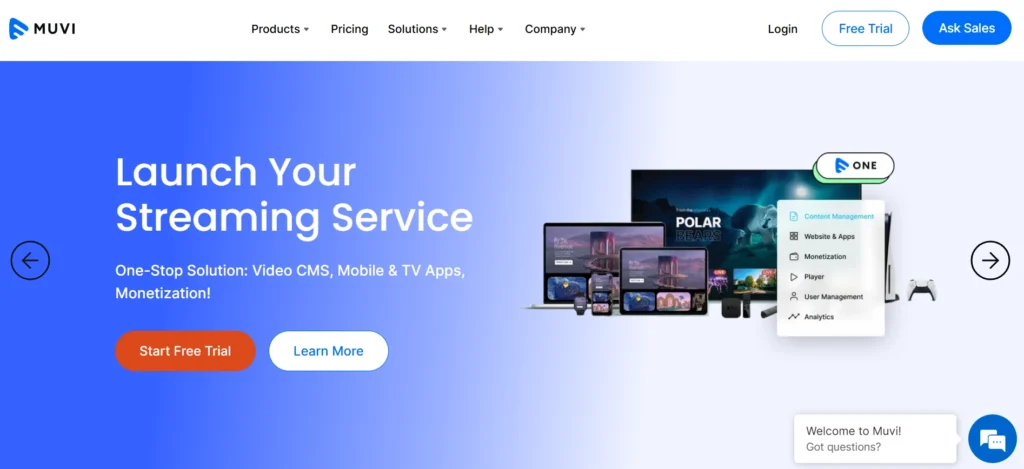
Muvi is a top video monetization platform that provides a complete solution for streaming and content management. With features like video hosting, live streaming, and monetization options, Muvi is ideal for content creators, media companies, and businesses looking to build their own streaming platforms.
It offers various monetization models, including pay-per-view, subscriptions, and ads.
Pros
- High degree of customization for OTT services.
- Multiple monetization options (subscription, pay-per-view, etc.).
- Excellent for businesses aiming to launch their own branded streaming service.
- Scalable and suitable for various content types.
Cons
- Expensive for smaller content creators.
- Steeper learning curve for new users.
Vimeo
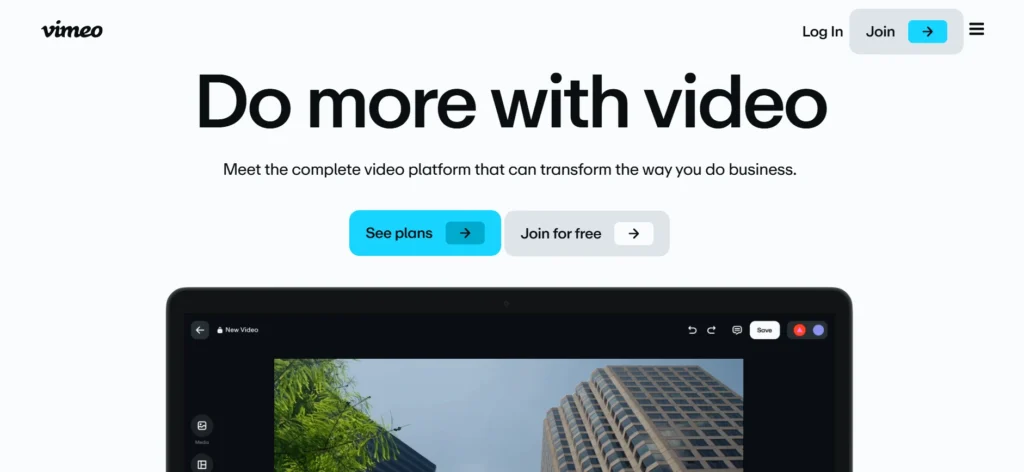
Vimeo is a popular video hosting and sharing platform providing content creators with various monetization tools such as subscription-based, pay-per-view, and tip-based models.
It is ideal for independent filmmakers, creators, and businesses looking for a high-quality video hosting solution with built-in monetization features.
Pros
- High-quality video hosting and playback.
- Great for creators looking to monetize their content.
- User-friendly interface and customization options.
- Strong video marketing tools and analytics.
Cons
- Limited monetization features in lower-tier plans.
- Higher-tier plans can be expensive for small creators.
- Limited live streaming functionality on the lower tiers.
Dacast
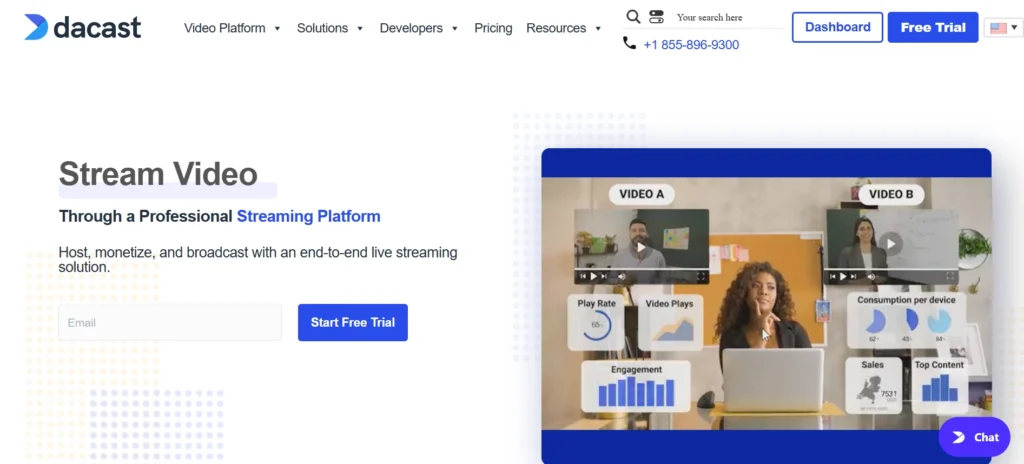
Dacast is a video hosting and live streaming platform designed for content creators and businesses that focus on live events. It offers several ways to make money, including subscription services, pay-per-view, and ad-based monetization, making it flexible for different types of content.
Dacast is especially popular for its live streaming capabilities, providing high-quality video delivery and the tools needed to stream events to a wide audience. This platform is a great choice for businesses that want to host live videos or on-demand content while generating revenue.
Pros
- Excellent for live streaming events and webinars.
- Multiple monetization options, including pay-per-view and ads.
- Reliable video delivery with global streaming capabilities.
Cons
- Limited features on the Starter plan.
- Pricing can be high for smaller-scale content creators.
- Limited customization options in lower-tier plans.
Brightcove
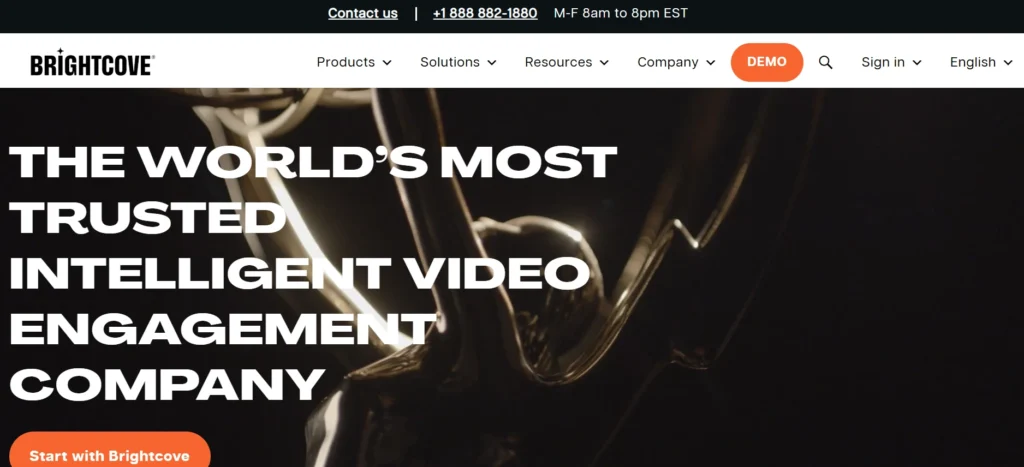
Brightcove is a powerful video platform built for large businesses and media companies that need to manage and stream a lot of video content. It offers flexible ways to make money from videos, like subscriptions, pay-per-view, and ads. Brightcove provides tools to easily manage videos, keep them secure, and track performance, making it a great choice for businesses looking to deliver high-quality video to a large audience.
Pros
- Enterprise-level scalability and performance.
- Strong video security and content protection.
- Advanced analytics and reporting tools.
- Reliable for high-quality video streaming.
Cons
- Pricing is typically higher than other platforms, especially for smaller businesses.
- Requires technical expertise for setup and management.
- May not be the best choice for small creators due to pricing and complexity.
Panopto
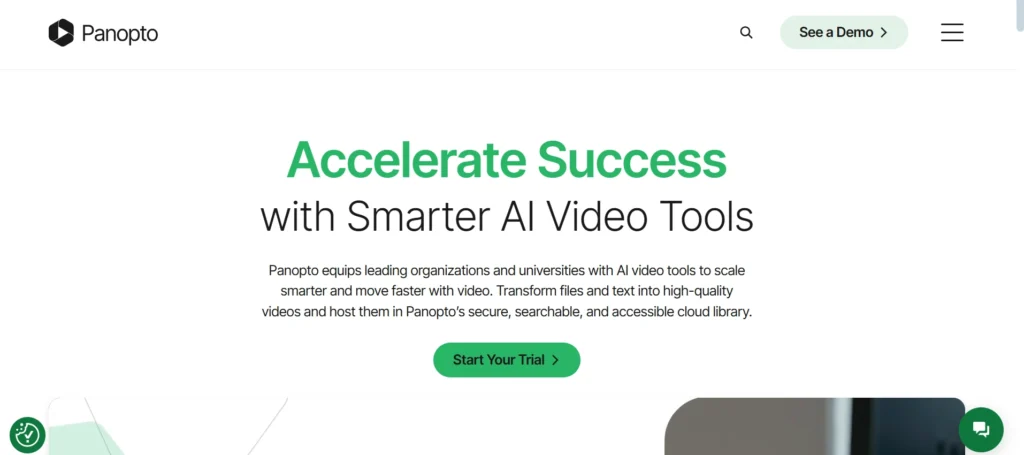
Panopto is a video platform designed mainly for schools, universities, and businesses. It provides an easy-to-use and secure way to manage, stream, and monetize videos. Panopto is perfect for organizations that need to share training videos, internal communications, or educational content.
The platform helps users organize their videos, stream them live or on-demand, and make money from them through different monetization options. It’s a great tool for those who want to create a video library for learning or internal use.
Pros
- Ideal for educational and corporate training.
- Easy integration with Learning Management Systems (LMS).
- Secure platform with great video search and management tools.
- Supports live streaming and on-demand content.
Cons
- Not suited for general content creators or entertainment-based videos.
- Custom pricing may make it expensive for smaller businesses.
- Limited public-facing video features compared to other platforms.
JW Player
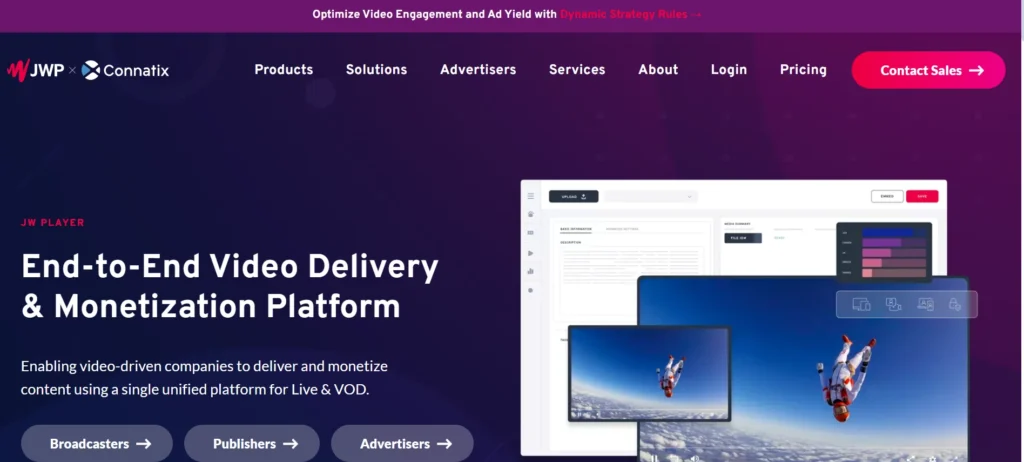
JW Player is a flexible video player and monetization platform that lets you customize the video player and integrate ads. It’s perfect for media companies, publishers, and marketers who want to make money from videos through ads, subscriptions, or pay-per-view options.
Pros
- Highly customizable video player with great performance.
- Excellent support for video ads and monetization.
- Easy to integrate into websites and apps.
- Strong analytics and reporting tools.
Cons
- Limited features on the free plan.
- Premium plans can be expensive, especially for smaller businesses.
- May not be as feature-rich as other platforms for large-scale streaming
Wistia
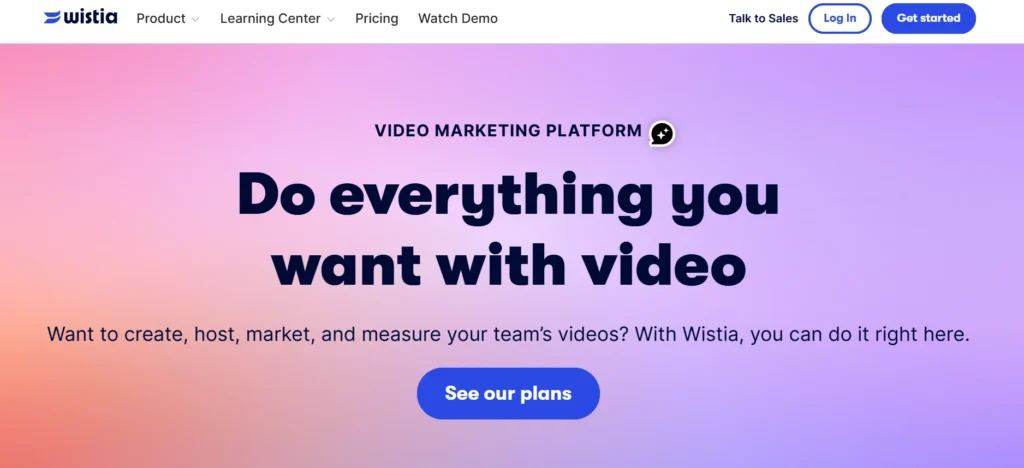
Wistia is a video hosting and monetization platform designed for businesses and marketers. It provides tools for video marketing, customization, and monetization through subscription or freemium models. Wistia is particularly known for its analytics, customization options, and focus on business use cases.
Pros
- Excellent video marketing tools with detailed analytics.
- User-friendly interface and customization options.
- Great for lead generation and embedding video on websites.
- Supports branding and customization for a more professional appearance.
Cons
- The free plan has limitations in terms of storage and features.
- Pricing can become expensive as video volume increases.
- Some advanced features are locked behind higher pricing tiers.
How to Choose the Right Monetization Platform?
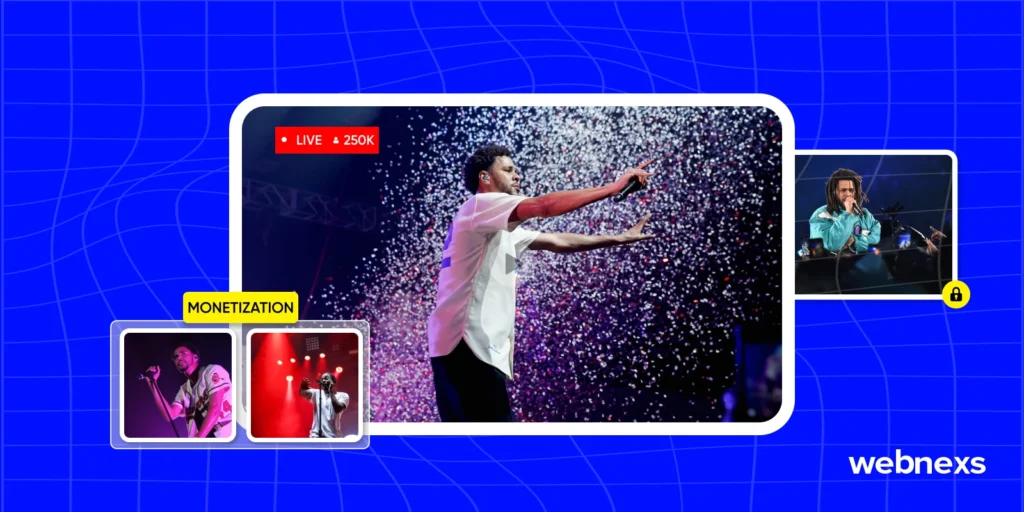
Choosing the right monetization platform can make a huge difference in generating revenue for your content.
Know Your Content Type
Think about what kind of content you make, whether blogs, videos, or social media posts. Different platforms work better for different types.
For example, blogs can make money through advertisements, while videos do well with advertisements or sponsorships. Pick a platform that matches the type of content you create.
Know Your Audience
It’s important to know who is watching or reading your content. If your audience prefers watching videos, YouTube or TikTok could be the way to go.
If they’re more active on Instagram or Twitter, those platforms might work better for you. Choose a platform where your audience spends the most time.
Look at Monetization Options
When selecting a platform, consider how you want to make money. Options include ads , affiliate marketing, selling products, and offering memberships.
You can also earn through sponsored content by partnering with brands.
Choose a platform that supports the monetization methods that meet with your content and goals.
Check the Requirements
Different platforms have their own rules for making money. Some may require you to have a certain number of followers or views before you can start earning.
Before you get started, make sure you meet these requirements so you know if you qualify to make money. It’s always good to check first.
Consider Revenue Split
Most platforms take a percentage of your earnings. For example, YouTube keeps part of your ad revenue. Affiliate programs also take a cut from any sales you make.
Compare how much the platform keeps and what you earn to make sure it’s worth it.
Test and Track Performance
Once you pick a platform, keep track of how it’s working for you. Use analytics tools to see how much money you’re making and how your audience is growing.
If something isn’t working, try other platforms until you find the one that fits best.
Steps to Monetize Your Videos Successfully

Choose the Right Platform
Pick the right place to share your videos based on your goals. Some platforms are great for advertisements, while others are better for selling videos or offering exclusive content. Think about your audience and content type to decide where to post your videos, or use multiple platforms to reach more people.
Set Up a Pricing Model
Decide how you will make money from your videos. You can earn through advertisements, subscriptions, or by charging per view. Pick a model that fits your content and how much your audience is willing to pay.
Integrate Payment Gateways
Make sure you can accept payments easily and securely. Use trusted payment systems that allow both one-time and subscription payments. Mobile payment options are also helpful for convenience.
Optimize Video SEO
Improve your video’s visibility by using the right keywords in titles, descriptions, and tags. Create eye-catching thumbnails and use captions to help search engines find your videos. Encourage viewers to engage with your content, as more interaction can increase your video’s chances of being seen.
Promote Content
Share your videos on social media, through emails, and on blogs to reach more people. Working with other creators can help spread the word.
Keep promoting your videos regularly to get more views and attract potential sponsors or subscribers, increasing your earnings.
Future Trends in Video Monetization
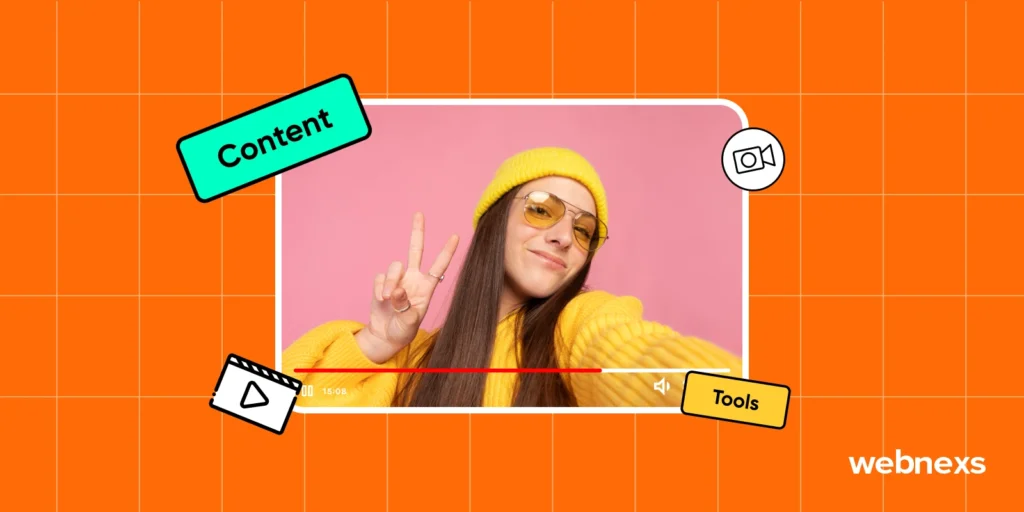
Interactive and Shoppable Videos
Did you know? Over 80% of consumers are more likely to purchase a product if they can interact with it in a video, showing the potential for creators to boost their sales directly through video content.
Videos will become more interactive, letting viewers click on products while they watch. This makes it easier for creators to sell things directly through their videos, and viewers will enjoy being part of the action.
Live Streaming Monetization
Did you know? Live streaming revenue is expected to exceed $70 billion globally by 2025, with platforms like YouTube, Facebook, and Twitch leading the way in live donations, paid subscriptions, and event ticket sales
Live streaming is becoming a big way to make money. Creators can earn money through live donations, chats, or by hosting paid events in real-time, making it a popular way to make money online.
Short-Form Video Growth
Did you know? Short-form videos are projected to account for 75% of all mobile traffic by 2025, which means more opportunities for creators to monetize their quick, catchy content.
Short videos, like those on TikTok or Instagram Reels, are getting even more popular. These quick clips are great for ads and brand deals, giving creators new ways to earn money with shorter content.
Sponsored Content and Brand Partnerships
Did you know? The influencer marketing industry, which relies heavily on sponsored content, is projected to reach $21.1 billion by 2025, demonstrating the growing value of brand partnerships.
Creators are increasingly partnering with brands to create sponsored content, where they get paid to feature products or services in their videos.
This trend is expected to grow as brands look for authentic ways to engage with audiences through influencers.
Conclusion
Video monetization platforms are important tools for creators, businesses, and media companies who want to make money from their videos. These platforms offer different ways to earn, such as ads, subscriptions, or pay-per-view options, allowing creators to choose what works best for their content and audience.
As video trends keep changing in 2025, things like live streaming, short videos, and interactive content are becoming more popular. Choosing the right video monetization platform is key to earning money and giving viewers a good experience.
By understanding your content, audience, and how you want to earn, you can pick the best platform to help you grow your earnings.
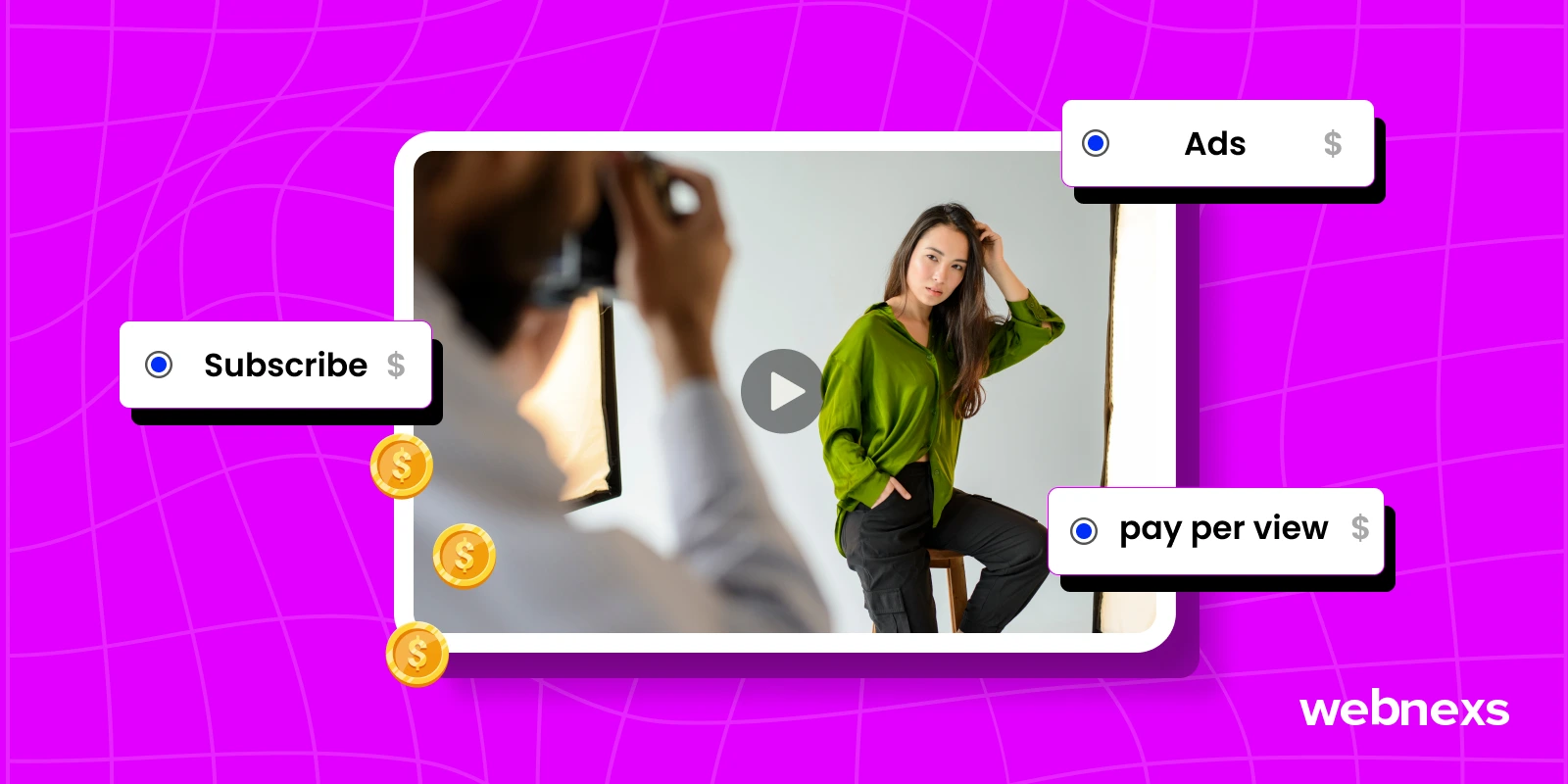

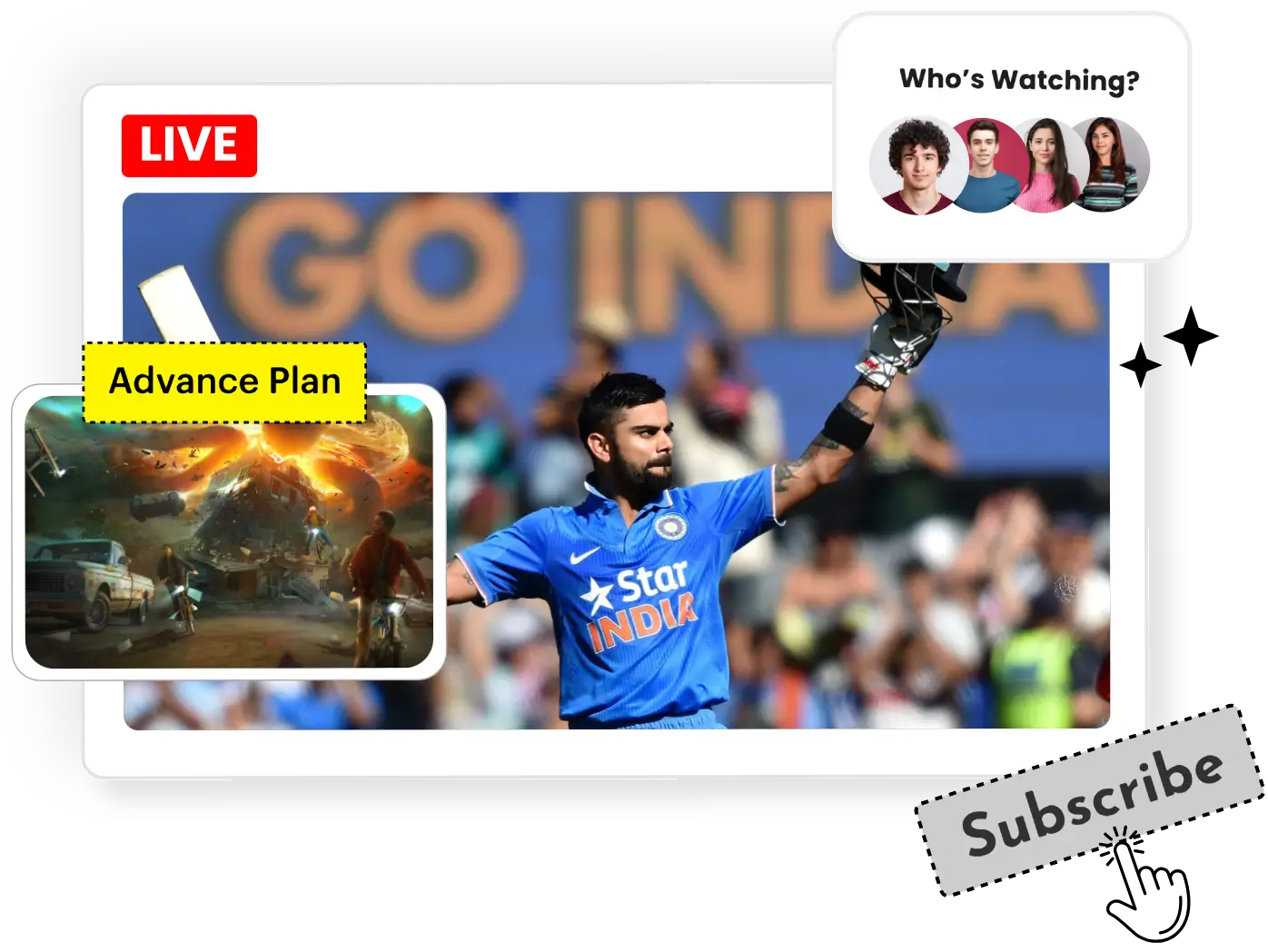
9 Responses
Good post, i got to know which is the right video monetization model for me among SVOD,TVOD and AVOD
Thanks for sharing as I was able to clearly understand difference between SVOD, AVOD and TVOD Monetization Models
A good comparison between SVOD AVOD and TVOD. Thank you for the blog
Thanks for this information about new model known as Hybrid Monetization model
I got a perception of what type of model to choose and what not to choose thanks for this blog
I liked the way you described about VOD monetization model
Interesting article!!!!!
By choosing a Video monetization model you can build an entire base of your video streaming as I am happy to get some idea about different video monetization model
Initially, I thought there is one video monetization SVOD, by reading this blog I came to know about other video monetization models such as TVOD, AVOD